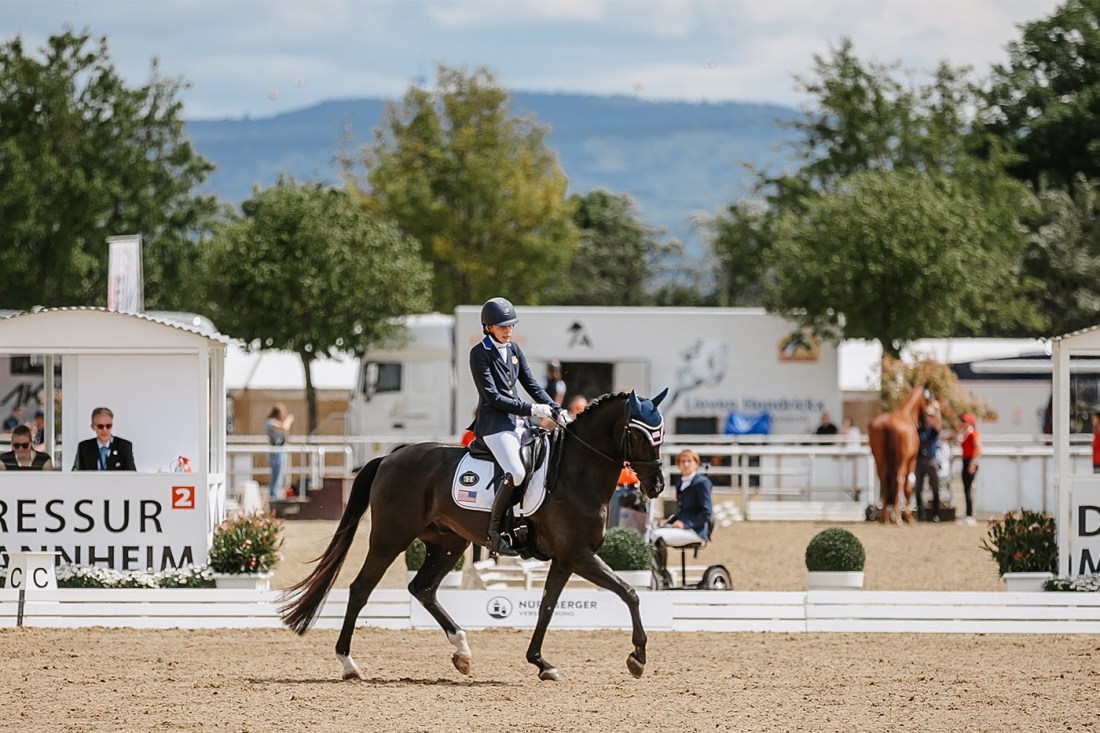
The 2021 Northeastern graduate has the muscle disease dystonia and digestive problems that keep her on a feeding tube. After nearly dying, the experienced equestrian had to learn to ride all over again.
Editor’s note: In the months after this story published, Howard was named to the U.S. Paralympic equestrian team and won three gold medals in para dressage at the 2024 Paris Games. Read Northeastern Global News’ coverage here, here, and here.
Perched at the entrance of a stadium in Ocala, Florida, in mid-March, Fiona Howard takes a breath and coaxes a large, chestnut gelding with a gash of white down his face into a smooth trot.
She and the horse, an 11-year-old Hanoverian called Diamond Dunes, have only known each other a week. But their first competition together in dressage — the equestrian discipline sometimes referred to as “horse ballet,” in which riders and their mounts complete a sequence of choreographed movements to accumulate points — has been an auspicious one. After earning top marks for two previous rides at the weekend-long event, the pair enters the rectangular show ring for their third and final outing, a “freestyle” routine set to the thundering film score of “Avatar.”
In time to the music, they move seamlessly from figure eights to lengthened trots and a sidestepping sequence. Howard sits tall and straight; the horse’s long limbs seem to float just above the dirt. They finish in first place. “He went out there and crushed it,” Howard gushes about Diamond Dunes in an interview a few weeks later. “He’s really talented, with a great brain.”
The performance is impressive on its own; even more so because Howard, 25, has almost no control of her body from the torso down.
A 2021 graduate of Northeastern University, Howard has become one of the world’s top-ranked riders in para dressage, a style that accommodates physical disabilities, since taking up the sport three years ago. She was an accomplished equestrian in her youth, but a series of catastrophic health problems left her hospital-bound for much of her teens. She has since competed for the United States in elite para dressage competitions in Qatar, Europe and Australia; she divides her time between the U.S. and Germany, training with the top riders in the sport.

Now, Howard stands on the precipice of her biggest stage yet — as a hopeful for the 2024 Paralympic Games this summer in Paris.
“I think her chances are extremely good,” says Kate Shoemaker, a 2020 Paralympic dressage bronze medalist and Howard’s coach. “Nothing matters until it actually happens, but training is going well. If Fiona can maintain her scores, she is in a great place.”
Howard was at Northeastern when she decided to get back on a horse. As an undergraduate, she spent years away from the barn while undergoing treatment at Boston Children’s Hospital for an ever-growing range of serious medical conditions. At 19, she was diagnosed with dystonia, a degenerative disease that causes involuntary muscle spasms.
Separately, also in her teens, her digestive system began to fail — she now uses a feeding tube to eat. During her four years completing a psychology degree, she spent 800 days in the hospital. More than once, her doctors prepared her for the possibility that she wouldn’t survive the night. But riding again — first without expectations, and now with sky-high ones — has expanded the boundaries of her once-deteriorating body.
“I was such an athletic child, and having my mobility taken away was really difficult,” Howard says. “When I ride horses, it’s where I can move. I can borrow their legs.”
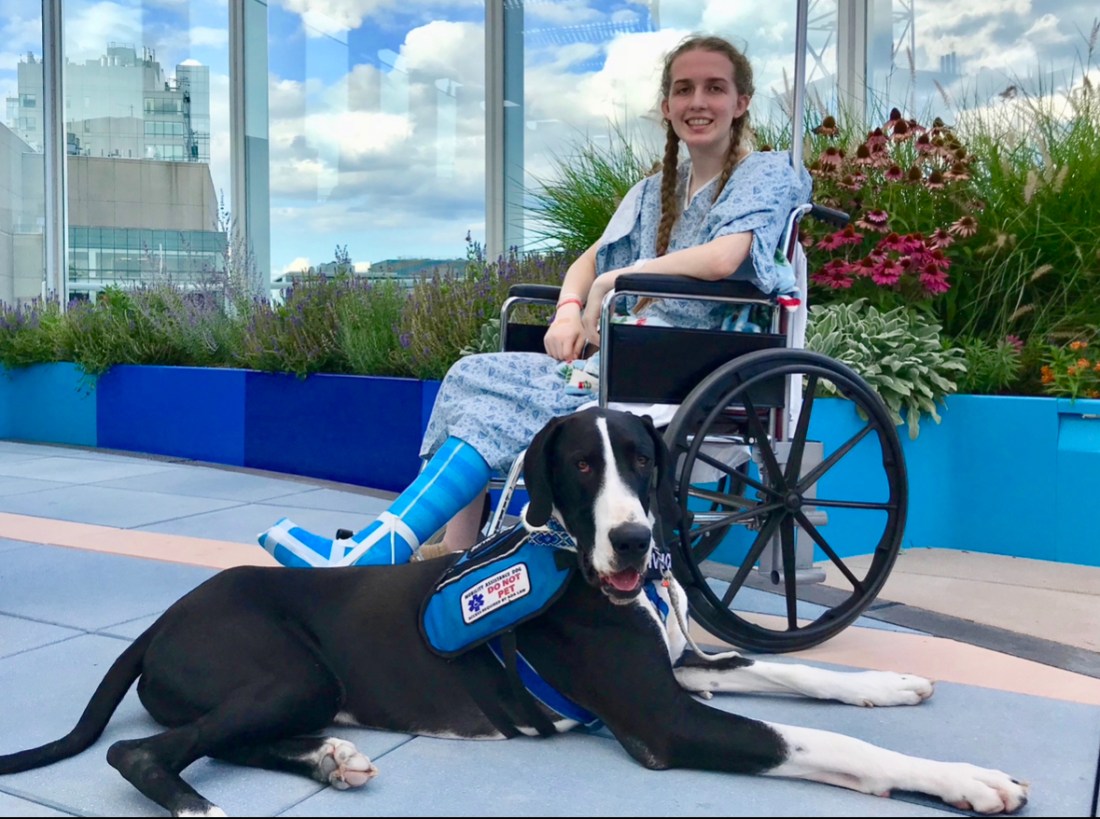
Howard grew up in London and started riding as a toddler. “My mom didn’t want me to,” she remembers. “She put me in every other sport, tried every musical instrument, every other extracurricular. She put me on some naughty ponies, and I fell off. But I just wanted to go again.”
Before long, the family gave in and bought her a Shetland pony, Lilly. As a child, Howard focused on reining, a Western-style equestrian discipline; she was an elite rider as a pre-teen, competing internationally.
But around the same time, she and her family started noticing certain things that weren’t right with her body. “I was constantly injured,” she remembers. “Just an ankle injury here or there. And I was really delayed in things like cutting my food, fine motor skills.”
Doctors attributed it to growing pains, and she continued to flourish as an equestrian. Then, as she got taller, her legs lengthened in the wrong directions, the bones caving inward instead of straight. Walking became more and more difficult.
Meanwhile, a run of serious illnesses, including Lyme disease and scarlet fever back to back, were wreaking havoc on her digestive system, severely damaging her intestinal tract. After three weeks in a London hospital with no answers, a doctor referred Howard’s case to Boston Children’s Hospital. She was 16.
She was supposed to be in Boston for six to eight weeks and work out a medical plan to take back to the U.K. But “I wasn’t getting better,” she says. “They were realizing that I had a lot more going on. And at the end of eight weeks everyone looked at each other, and it was a bit like, ‘she’s not going home.’”
Facing a long, complicated treatment road ahead, Howard applied to colleges in Boston to be closer to her medical team, enrolling at Northeastern in 2017. “Northeastern was the right fit from the get-go,” she says. “They were super accommodating of my health, and it really felt like they wanted me there.”
Eager for a mental distraction, she buried herself in schoolwork, majoring in psychology and completing an internship with former professor James Akula in his ophthalmology lab at Children’s. He helped her land a co-op in a cardiology lab there; since graduation, she has worked full time for the hospital as a clinical research assistant.
In Boston, Howard’s legs got progressively weaker; she got around with the help of crutches, a wheelchair and Elvis, a mobility service Great Dane. Her dystonia, a neurological disorder, causes involuntary muscle spasms primarily in the legs and trunk, but it also affects her arms. There’s no cure, only management: treatment has involved intensive surgeries, leg bones broken and reset, physical therapy and targeted Botox injections.
Digestive and heart issues, however, became a more dire threat. Howard eventually had part of her lower intestine removed, and to compound her problems, a congenital heart defect made her a regular in the ICU. During one hospital stay in her junior year, doctors weren’t sure she was going to pull through.
“They were worried my heart was going to stop. And this is kind of morbid, but I was OK with not making it,” she admits. “I was surviving, but it wasn’t a life. And it was in that moment that I really thought, ‘I need to go back to horses.’”

Even as she got sicker and sicker, Howard was at the barn as much as possible in England. When she went to the states, however, “it was very abrupt. I was riding one day, and then for about four years I didn’t really get on a horse.”
But she didn’t give them up entirely. Shortly after enrolling at Northeastern, she joined the university’s equestrian team as a non-riding member. When healthy enough, she accompanied the group to their training barn, Harmony Horse Stables in Littleton, Massachusetts. At first, she just sat on other people’s horses. Then, gradually, she started figuring out how to ride all over again.
“She’s such a strong little person,” says Kara Kobernick, a former riding instructor at Harmony who gave Howard lessons during that period. “When she decides she wants to do something, she does it.”
It was a learning curve for them both. Under saddle, horses respond to subtle cues from a rider’s legs, feet and hands, which Howard could no longer rely on in the same way. “We had to work together to figure out different ways to get the results we wanted,” Kobernick says. Riders who can’t signal a horse with their bodies, for instance, can use aids, like light whips in each hand, to prompt turns and tempo changes.
But it was only a re-learning process in part. Howard still had her innate, preternatural feel for horses, along with skills honed from years of experience riding at an elite level. Shea Pease, a close friend and former captain of the equestrian team, noticed them almost instantly.
“We were riding in New Hampshire and put [Fiona] on this Quarter Horse, Chunky,” Pease remembers. “He was super slow, no one could get him to do what we wanted. Fiona sat on this horse, with her reining background, and all of a sudden, he was moving like we’d never seen him move before.”
“She uses her seat so well that the legs are almost an afterthought, which is the opposite of how it is for most riders,” Pease adds.
As her health stabilized, Howard was out at the barn almost every day. She worked with her medical team to shift the priorities of her ongoing treatment. Rather than pursue aggressive options, like brain surgery and even amputating her legs, that might improve her long-term prognosis, the goal became managing her symptoms enough that she could enjoy life outside the hospital.
Above all else, that meant riding. Her senior year, Howard participated in a few intercollegiate shows, getting a dispensation to compete in novice and intermediate classes despite her earlier, decorated show career. The idea for para dressage, Kobernick says, came entirely from Howard. She had dabbled in dressage as a child, and the discipline’s focus on seat and precision — rather than on leg-dependent physicality, as in sports like show jumping — seemed like a promising fit. That turned out to be an understatement.
“She found exactly where she’s supposed to be,” Pease says.
In dressage, horse and rider pairs complete “tests”: prescribed sets of movements that increase in difficulty from beginner to Olympic-level “grand prix.” The “para” in para dressage stands for “parallel;” riders compete in adjusted tests with approved accommodations, tailored so that a “para” test for a qualifying rider is equal in difficulty to a conventional test for an able-bodied one. Depending on their limitations, para riders fall into one of five grades, from the most physically impaired (1) to the least (5). Howard is a Grade 2.
“Your compensating aids are based on your specific disability,” Howard explains.
“My stirrups are tied to my girth, and my feet are tied to my stirrups. If I didn’t have that, my legs would be stuck backwards doing their own thing. And because I can’t grip very well, I can put a finger through a loop so that I don’t lose my reins.”
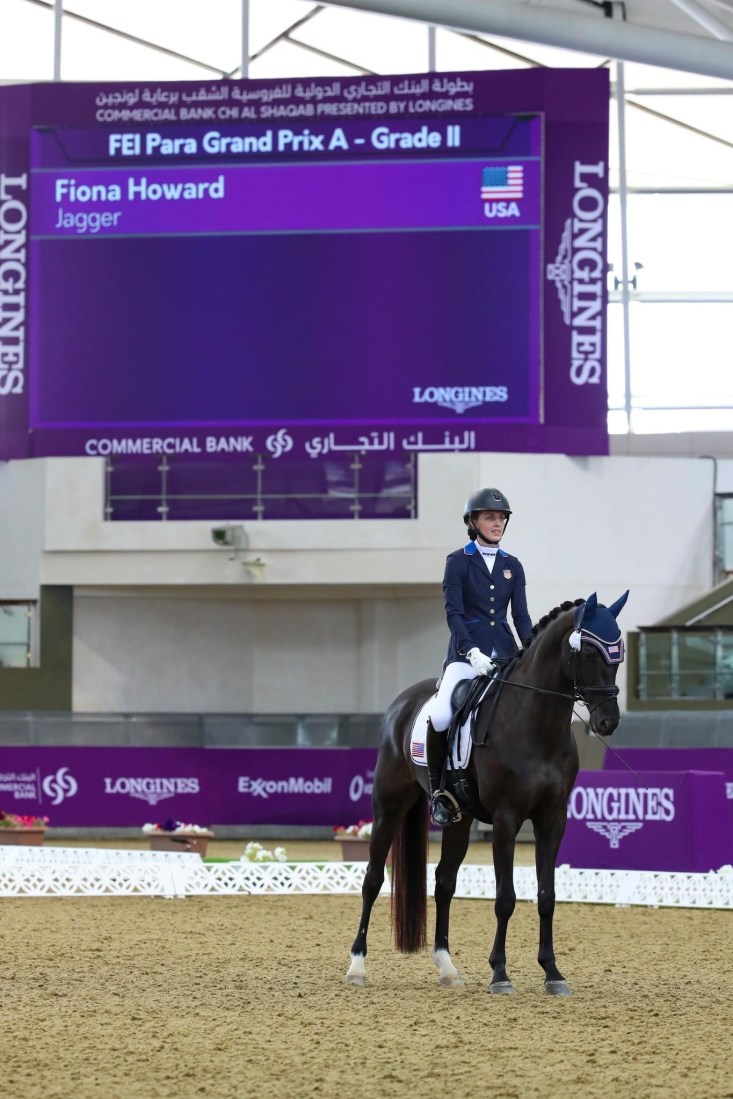
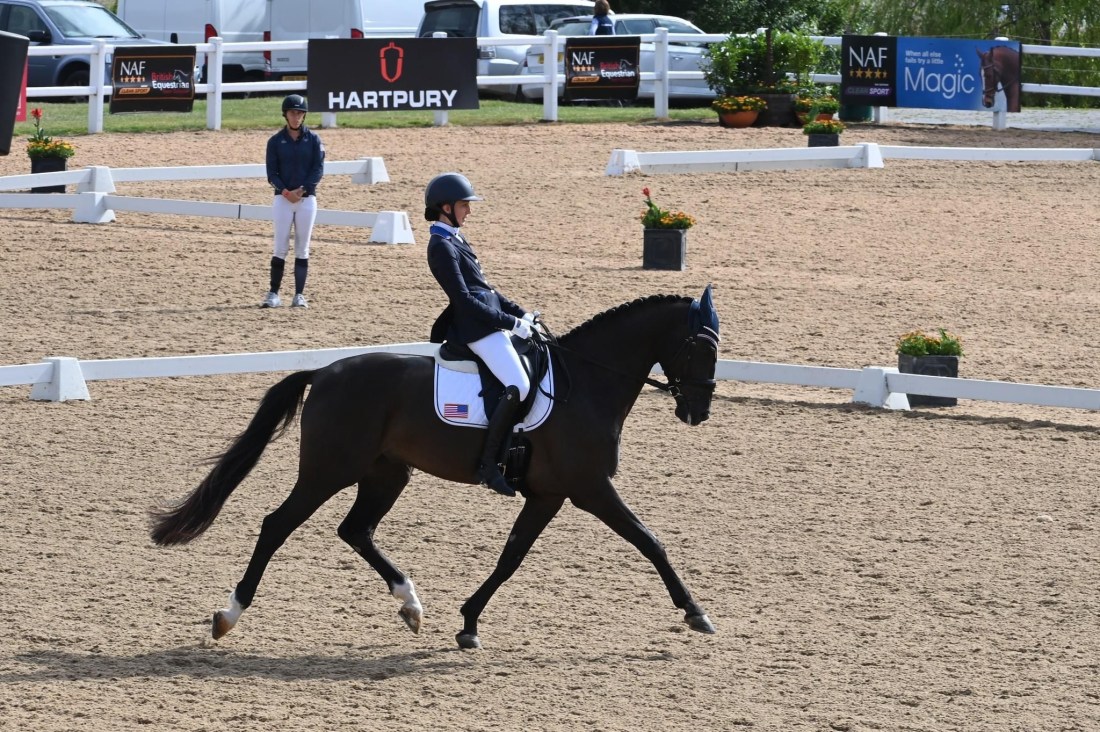
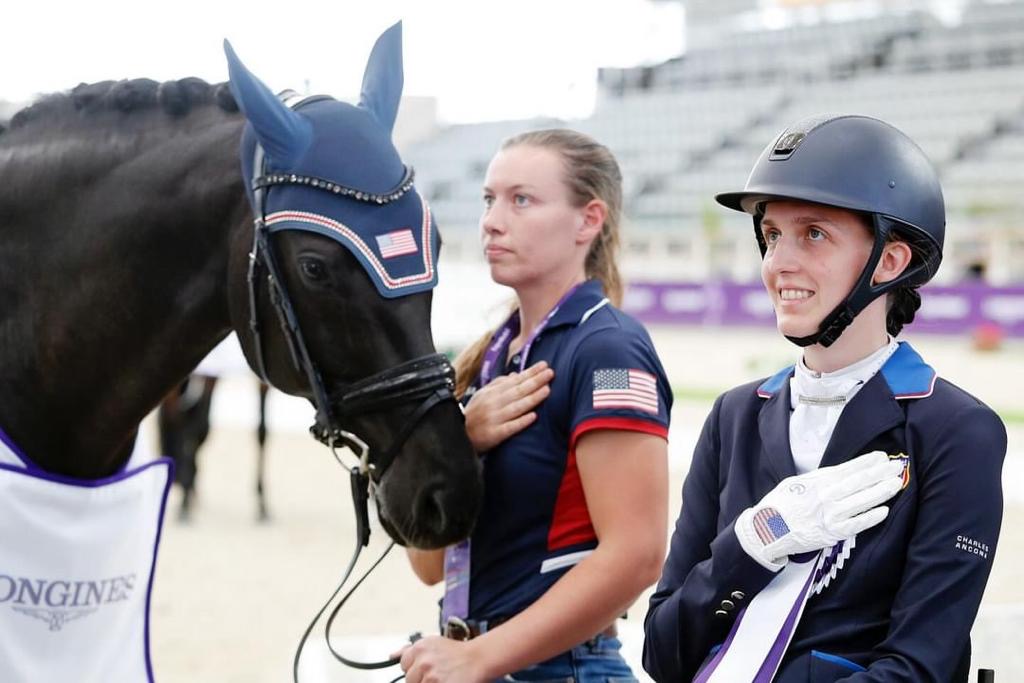
Mastering the tests and aids was one thing. Finding a horse was another. After a few local shows around New England, Howard and Kobernick traveled to Wellington, Florida, to have Howard compete in her first recognized event and find a mount that could work well with a para rider.
“There are a lot of different personalities,” Kobernick says. “You don’t want what we call ‘hot horses,’ who are really sensitive and have a hard time handling rider error or miscommunication. You want one who will accept learning a different way.”
Additionally, the top dressage horses tend to be pricey “warmbloods” — big, graceful animals with at least a decade of training, sharp intellect, poised demeanors and huge, sweeping gaits.
For the Wellington show, Howard borrowed Charlie, a Thoroughbred. He wasn’t flashy, but he was eager to please. “Charlie was so great,” Kobernick says. “Not knowing Fiona very well, he stepped right in that ring for her, and we were very happy with the results.”
During a second Florida show, the pair caught the eye of Shoemaker, who competes at a Grade 4. “She was getting these great scores kind of out of nowhere, and I had to introduce myself,” Shoemaker says.
As she got to know her better, Shoemaker was astonished by Howard’s command in the saddle in the face of her physical challenges — since she’s tube fed, Howard has much lower energy reserves than a typical rider, for example. “She makes it look easy,” Shoemaker says. “The effort she puts in compared with a normal person, we can’t even imagine. Sometimes she comes out of the arena and can barely sit up, but still looks poised. Not everyone can do that.”
In 2022, Howard moved to Florida to train with Shoemaker full time. They found her first dedicated dressage mount, a 12-year-old Westphalian gelding named Jagger. As Howard stormed the world para dressage rankings, Jagger became an experienced traveler, accompanying her to shows on three different continents.
“He’s such a special horse,” Howard says. “He tries his heart out. He can get nervous, and I have to ‘hold his hand’ a bit when we go into a big stadium. But he’s just kept giving and giving. I hope I’m selected for the Paralympics on him.”
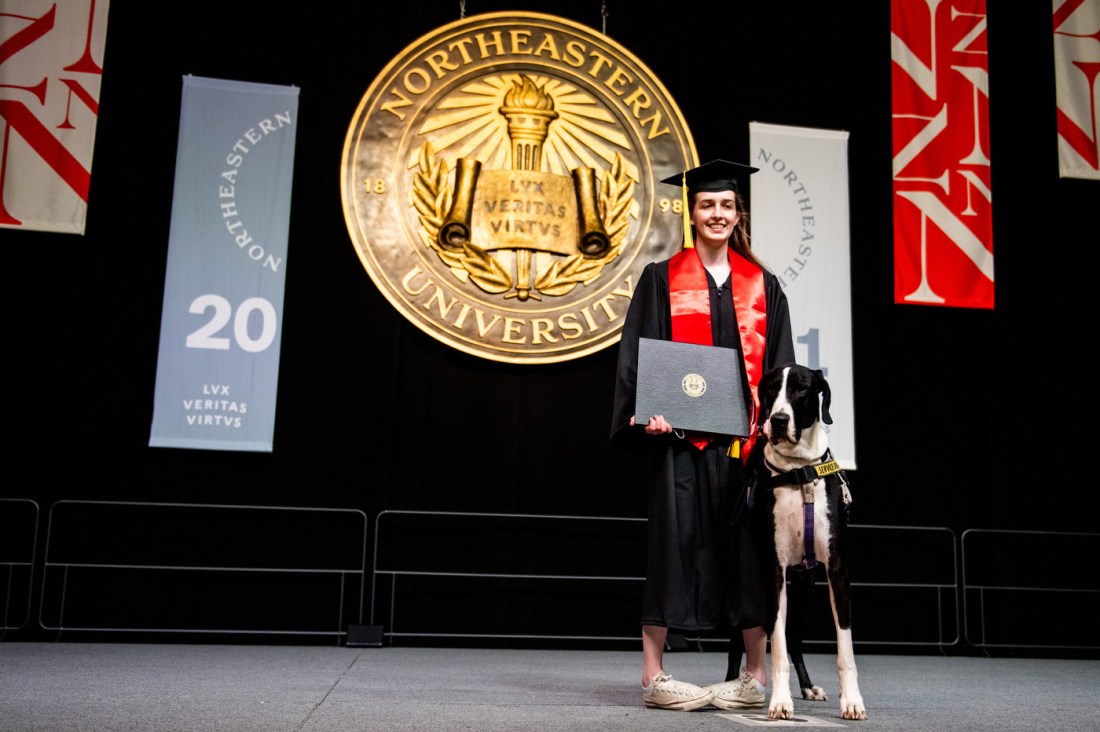
Howard is based in Germany, a world capital of dressage, for the spring and summer. She trains with Shoemaker at Hof Kasselmann, a storied barn in the northern part of the country that plays host to able-bodied Olympians and para riders alike. She trains every morning, then works remotely in the afternoon and evenings for Boston Children’s. If her health permits, she’d eventually like to pursue a career in medicine, perhaps as a physician, a physician assistant or veterinarian.
As is typical for elite riders, Howard now has a rotation of horses: Jagger and Diamond Dunes are her two main partners, and she will attempt to qualify for Paris on both. And she’s training two younger horses for the future.
That holds its share of unknowns in and out of the dressage ring. Right now, Howard’s health is in a good place; her doctors have helped her manage it across the ocean.
“I don’t always make it easy for them,” she laughs. “When I call them and I’m like,
‘I’m having a cardiac arrhythmia. I’m in Germany, and I’m about to leave for Qatar,’ They’re like, ‘OK. Let’s make it work.’” She thinks riding has slowed her dystonia’s progression; doctors once thought she’d only use a wheelchair by now. “I try to walk a little bit every day,” she says.
Later in the year, Howard will return to the states for another round of orthopedic surgeries. Afterward, she hopes to represent the United States at the 2026 Equestrian World Championships in Aachen, Germany.
“I just want to do this for as long as I can,” she says. “I’ve already stared death in the face numerous times. So I’m going to live my life. That’s in my control. The rest is not.”
Schuyler Velasco is the campus & community editor for Northeastern Global News. Email her at s.velasco@northeastern.edu. Follow her on X/Twitter @Schuyler_V.





